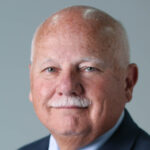
My Guest:
Amy Sample Ward: Tech Equity

NTEN has a new guide on equity for nonprofit technology, to deepen the racial equity conversation. To explore and reveal intersecting inequities between technology and nonprofits. You know who my guest is. You know who it has to be. Amy Sample Ward, NTEN’s CEO and our technology contributor.
Listen to the podcast
Podcast: Play in new window | Download
Subscribe to get the podcast
Apple Podcasts | Spotify | Google Podcasts | Stitcher
Get Nonprofit Radio insider alerts!
I love our sponsors!
![]() Turn Two Communications: PR and content for nonprofits. Your story is our mission.
Turn Two Communications: PR and content for nonprofits. Your story is our mission.
Dot Drives: Raise more money. Change more lives.
We’re the #1 Podcast for Nonprofits, With 13,000+ Weekly Listeners
Board relations. Fundraising. Volunteer management. Prospect research. Legal compliance. Accounting. Finance. Investments. Donor relations. Public relations. Marketing. Technology. Social media.
Every nonprofit struggles with these issues. Big nonprofits hire experts. The other 95% listen to Tony Martignetti Nonprofit Radio. Trusted experts and leading thinkers join me each week to tackle the tough issues. If you have big dreams but a small budget, you have a home at Tony Martignetti Nonprofit Radio.
View Full TranscriptProcessed on: 2020-10-09T16:16:15.517Z
S3 bucket containing transcription results: transcript.results
Link to bucket: s3.console.aws.amazon.com/s3/buckets/transcript.results
Path to JSON: 2020…10…510_tony_martignetti_nonprofit_radio_20201012.mp3.694501602.json
Path to text: transcripts/2020/10/510_tony_martignetti_nonprofit_radio_20201012.txt
[00:01:31.24] spk_1:
Hello and welcome to tony-martignetti non profit radio big non profit ideas for the other 95%. I’m your aptly named host. This is a special episode of non profit radio to help you be the change around racism and white privilege. Tech Equity and 10 has a new guide on equity for non profit technology to deepen the racial equity conversation to explore and reveal intersecting inequities between technology and non profits. You know who my guest is? You know who it has to be. It’s a me sample ward and tends CEO and our technology contributor response erred by turn to communications, PR and content for nonprofits. Your story is their mission. Turn hyphen two dot ceo and by dot drives, raise more money, change more lives for a free demo and a free month. It’s my pleasure. Always a privilege to welcome Amy Sample Ward to the show. She is our social media and technology contributor and CEO of her most recent co authored book is social Change Anytime everywhere, which is actually running a little old Now you’ve been resting on that laurel for a while.
I was gonna say the same thing. I was gonna say, Gosh, I just looked at the book the other day and saw how many years ago that came out. I think we have to like, we gotta find some other filler sentence for that intro. [00:01:48.29] spk_1:
Oh, you don’t want to write a new book. We just [00:01:50.23] spk_0:
What? What? What is there? What would I write a book about? You know? [00:01:56.14] spk_1:
Oh, you’re a bright person. Oh, there’s more to say about technology. You could go deeper into technology subject, but it’ll be a lot easier if tony-martignetti just changed your intro. [00:02:06.05] spk_0:
Yeah, then there’s no like writing. [00:02:16.94] spk_1:
Alright. No six months of writing, collaborating, finding publishers. None of that imagine. Imagine the eat that I could let you off the hook with on Dhe. You’ll find her, of course, at Amy Sample Ward dot or GE and at a me RS ward, the not so recent author. Any simple words? [00:02:26.34] spk_0:
How you doing [00:02:26.76] spk_1:
out there? Portland, [00:03:27.24] spk_0:
You know, after feels, I think it feels kind of moment to moment in Portland. Whether it’s Portland, especially inspired or scared or motivated or ready to just hunker down in the house and never leave again. You know, it’s kind of Ah, a many front situation happening in Portland right now between fires and protests. And cove it, of course, and so many things. So you know, it’s it’s interesting to visit as a team, and 10 has 15 staff and nine of us are in the Portland metro area and six are all over the U. S. So, um, you know, we’ve got staff in Seattle in San Francisco and New York and all these other places, so it feels like every day when staff meet, you know, there’s there’s kind of, like our correspondents out in the field reporting in from all the different the different corners of all these different issues, you know, And it kind of helps everybody feel connected and informed in, like, a real way versus Oh, I saw this random article that got tweeted. You know, it’s like, No, you’re really in that city. What’s it feel like? You know, [00:04:02.44] spk_1:
you’re the 1st 30 minutes of your staff meetings were probably what’s happening in San Francisco, Seattle, New York, Right in Portland for those outside. Yeah. Um, okay, let’s talk about equity equity and technology [00:04:06.94] spk_0:
sounds again. [00:04:11.64] spk_1:
So how did N 10 get into this guide. [00:06:35.54] spk_0:
Well, since we’re talking about this for the whole show, I’ll tell you the long story version and that is that a number of years ago, actually, in 2016 a tw the end of that year you may remember something of note happened that has shifted some of the direction of our country and we twice a year. All staff have, like, come together in person. If you could remember what what being in person with other people was like on the board also has to in person meetings a year and at the staff and the board in person time. At the end of 2016. We did this kind of like a visioning exercise, But it’s not the type where we were trying to create a new strategic plan envisioning specific toe intend, but mostly saying, like, What do we think is gonna get worse in the sector? What is there anything that’s going to get better? Are the things they’re going to stay the same just like what? What’s the environment we’re working in? And then from there, what kind of role could we play in service to that? Because then 10 really sees our work as community centered in service to the community and the number one opportunity that came out from both the boards work and the staff’s work. Waas being a leader in talking about or putting forward information about that intersection of ethics and equity and what we are doing. We’re using technology tools that are also being used. Bite people holding kids in cages were using technology tools that are making a ton of money off of us were you know, like all of these pieces, that whether we can change those things or not, we can at least name those things and equipped folks to better understand them and talk about them and make decisions to kind of navigate what all those implications are for their staff and for their community. So we started really elevating that type of content in articles and, you know, within the community a lot of NTC sessions on Dhe. Then last year in 2019 it was like, Okay, it’s really time for something that folks could like, you know, print and hold in their hand and say, like there’s a lot of ideas here for me to work with, you know, something more than individual sessions or articles. So we put together really diverse and honestly, just like super cool. Like I loved getting to talk to all these people working group of community members, folks that work, you know, in in building tools and using tools that, you know, all all across the spectrum. There have. [00:07:23.00] spk_1:
Ah, a lot of the work group members were We’re have been guests. Oh, really? That’s awesome. Raj Aggarwal, Tracy Krohn Zach Tristan Penn who works for in 10 Jason Shim Ruben Sing. And they have all been guests. Yeah, [00:07:25.21] spk_0:
well, look at you. You’re pulling the right people. You know, [00:07:28.79] spk_1:
we are. I am. We are. Yes. [00:07:33.54] spk_0:
So we had this big working group on dhe. Really? Just went through a lot of, you know, idea intake and try and kind of synthesize that and then regroup and talk it through and brainstorm or things. And, you know, I think what ultimately came out is a guide. I know we kind of talked about this before, but just to name why we named it that. Yeah, Report [00:07:59.24] spk_1:
versus guide. Okay. We’ll talk about that. [00:08:06.84] spk_0:
Yeah, we I mean, we really wanted to create something and make clear that even this thing we’ve put out is probably gonna look different six months from now as the sectors that were working in change as we as organizations changes, people change, you know, there might. We might feel there’s more things we can add to it. There might, because it feels like it becomes the standard and we don’t need to name it anymore, and ADM. Or, you know, [00:08:32.42] spk_1:
right it sounds artificial to say it’s a report on equity racial inequity in technology used by non profits. E think of the conversation. [00:09:39.44] spk_0:
The other piece that we really wanted to acknowledge in this is that it is not like it’s not comprehensive. This, like in so far, is like this is not the list. You know, there’s nothing else to dio that would improve equity. Um, and you know, it’s not the things that are included there. We really are like bumpers or directional guides. They don’t tell you what the policy should be, because ultimately the specifics of the policy you’re gonna be based on your organization and your staff. And how many staff do you have? And where do they were? You know, there’s all these other pieces that we don’t know, But we can tell you like Don’t go past this bar, you know, stay within these bumpers on dhe that will get you going in the right direction. So ultimately downloading or reading on the on the website, the Equity guide is just like the jumping off point to a lot of work. It is not already the work for you. You [00:09:53.84] spk_1:
know, I was very careful to when I was writing the description, I wanted to say to reveal intersecting inequities, not reveal the intersecting inequities again. A ZX If it’s if it’s the finally [00:10:03.32] spk_0:
the only ones. Yeah, [00:10:37.54] spk_1:
right. This is all. There’s no more exploration to do now. You’re like like the entire white privilege. Racism, conversation. It’s a It is a It’s a conversation. It’s a journey. You know, Every guest I’m talking about these issues with says the same thing. No, of course. And I know you and I have talked about it. It’s long term. It’s not a check off item, it’s it’s maybe never done, but it Z it’s consciousness. It’s working through policies. It’s having difficult conversations, so there isn’t going to be a definitive guide and definitive report record, right? [00:11:06.34] spk_0:
You want this to, of course, be used at organizations that maybe haven’t done a lot of investing specific Teoh Mawr Equitable outcomes internally or with their community as well as organizations who feel like they really have, you know, and 10 has really deeply and across the organization invested in equity work. We look at this list and are like shit, man, there’s a whole lot of work to dio, right? Like any organization, No matter how much you’ve already started or gone down that journey, it is forever work. So there’s tons on within the guidelines where we think, Oh, that’s we We’ve done something there. But now that we’ve done something, we can see how much more we could do there, right? We could see what even further down each of those roads could could be for us. So and this has to [00:11:36.79] spk_1:
be continuing work because, right, it’s just as just the same as your um propagating your values, the organizational values when so when, when racial equity becomes a value, you don’t say your values have an end game. The value of, um, I’m trying to separate it from [00:11:58.03] spk_0:
before. I mean, I think it’s a really great way to think about it, thinking about racial equity, the value, because all the other values you may have, you know, whatever they are, joy, you know, whatever. You also don’t see them as having a singular definition. You don’t say old equals this. You say, Hey, in this decision we’re trying to make right now, what would bold look like? Bold is our is our value. What would bold look like? Right. So why why wouldn’t we also say the same thing about equity and say, hey, in this situation in this decision, whatever we’re working on, what is that what you look like here? You know? [00:12:35.84] spk_1:
Right. Okay. I just had the servant Ah ha. Moment around naming equity as a value of the organization on dhe. Therefore, and as you just described, all the other values don’t have in points checkoffs. Yeah, completion statements. Why would racial equity? Uh, okay. It was a bit of a moment for me. Sorry. [00:12:58.65] spk_0:
I’m glad I could be here. I’m trainable, e. [00:13:08.54] spk_1:
I swear I’m trainable. All right. Um, so equitable technology. So you talk about, um, inequities that intersect between the non profit community, non profit work and technology. That’s that’s the That’s what we’re trying to elucidate here in this in this guide that the way those two circles intersect [00:16:42.54] spk_0:
Mhm. Okay, you know, I think that a lot of in equity, especially in equity related to our technology, gets overshadowed. Like every other instance in organizations, we kind of look less at the technology because we’re focused almost exclusively on programs. And so we’re saying, you know, just like we do in budget conversations or anything else. You know, there’s this focus on programs, and so equity looks like how racially diverse are our participants or something like that, which is important. And I’m not saying Don’t look at that. But that’s not the end of what equity means in your organization, especially when we start talking about technology. Because if you’re providing service is or programs to a racially diverse group of community members and you’re using a technology tool, you know you’re using ah database, for example, where they register on your website for those programs. And it requires they enter certain data that some groups either don’t have or feel really untrusting trying to give that data to you. And you’re not thinking that through that right there is already a nen equity, right you are. You are trying to discourage certain people even though you don’t maybe recognize it, or or unconsciously making the decision to do it. You are discouraging groups of folks from participating in your programs just because of that technology decisions, you know, So technology doesn’t operate just visit’s itself. You know, it’s not just the hammer sitting on the shelf. It is what’s allowing you to do your work to communicate with people. Thio Get them registered for that program, whatever it is, And we can’t let go of technology being that instrumental to all of our other decisions. Otherwise, we’re not going to acknowledge, like, really what’s influencing the outcome there. And, of course, then we think about, you know, non profits and the the technology sector. I think one big area that we talked a lot about in the working group WAAS organizations aren’t inclusive in the ways they make decisions, so so often we see non profits, not including community members in decisions about the way the program might run or the way the website might be redesigned. Those air, anything that involves the participants should have have those participants in the same process for the decision and the planning. But organizations so rarely do that. And then, on the technology side, we have a really not diverse group of people building these tools. So we’re having a real lack of inclusivity of any kind in the building of the tool, then being used by an organization whose not including all of the participants in the decision to use it or how to use it. Of course, it’s gonna enter some problems, right? Like there’s no way that that can’t be the outcome here. A very small group of people made it, and now an organization is using it kind of without their eyes open to it. [00:17:21.84] spk_1:
It’s time for a break. Turn to communications. They help you build relationships with journalists because of a relationship built by turn to the New York community. Trust got to features in the Wall Street Journal. That’s how well it works when you have the existing relationships turn to specializes in working with nonprofits. One of the partners, Peter Penna Pento, was an editor at The Chronicle of philanthropy. There are turn hyphen two dot c o Now back to tech equity. So let ZX spend a little time. Let’s let’s talk about the the guide itself. Oh, you you haven’t You haven’t organized for for users and for builders of technology and for funders, [00:17:36.64] spk_0:
which is profit. Could be all three of those things, right? [00:17:51.74] spk_1:
It certainly could, Absolutely. If you’re building technology and you make and you provide grants, you you fund fund people or organizations, of course, equitable text. So, you know, there’s a lot of you gotta look for listeners. You just got to get the guide. I mean, waken doom or than weaken then I can with authors, Right? Because those air 250 page books, this is not a 250 page guide. It maybe, maybe maybe in a couple of generations it will be, [00:18:10.42] spk_0:
but so we can currently Currently I think it’s 27 pages. [00:18:25.04] spk_1:
Okay. All right. So you got to get the guide. If you want to do this work, if you wanna be making be centering equity among all your other values as you make your technology decisions as you think about technology and the way it’s used in your organization or purchased in your organization, or maintained or used by those who you’re serving or any of your other constituents. And, you know, you gotta get the guide, obviously, which, uh, the guide we could just get the guided and 10 dot or ge right? [00:18:46.24] spk_0:
Yep, totally free up on the website. If you go to end 10 or GE and then you click on resource is listed right there. [00:19:09.44] spk_1:
Okay, so let’s talk about Equitable Tech Not assuming tech expertise. Yeah, training, you know, having equitable policies around use, um, providing money where a lot of organizations wouldn’t typically What? What? What are our concerns here? What do you what? The group [00:19:17.49] spk_0:
we’ll talk [00:19:18.24] spk_1:
about here [00:22:23.24] spk_0:
that, you know, hiring folks whenever they think about having a more diverse staff. Racially diverse staff. They always think thio hiring new people because the place they’re coming from is a staff that isn’t diverse. Writer is predominantly white, and there’s this feeling that, like, well, so we’ll just not change any of our higher being process or change. Our organizational culture will just hire people of color through that process somehow which, if that If that was all that was gonna happen, then you wouldn’t be in the situation, right? Especially when it comes Thio technology roles. And that doesn’t mean that it’s like the I T director, as we talked about before it, you know, communications director is the technology staff person, right? Like they’re making lots of technology decisions all the way across an organization. So recognizing that the folks who have had all kinds of systemic access and encouragement to go to college to graduate from college, to graduate from college with a computer science or some other technical degree like guess who those people are super well resourced white men, right? Like that’s just been the reality we’ve had for decades. So if you’re hiring for roles that use technology and you’re saying that you require a college degree, you require a degree in some specific field that you, um, are expecting folks to apply and already have experience or knowledge of specific products, your you are signaling in that job description. We are looking for that well resourced white man, right, because while of course there’s like exceptions to that reality, that’s not you’re not going to necessarily find the exception in there, right? So what? What’s the difference in saying that someone has a college degree or not like, Are they having to write term papers for their job? Like, I don’t know that that isn’t necessary In 2020. I don’t know that we need to rely on those kind of outdated expectations. Nor do we need to say you already know how to use all the products that we use. Well, did all of your staff know how to use them when you bought them? No. You trained them. Why wouldn’t you train a new person? You know, so really investing in hiring great people who love your mission, want to do your work are from the community you serve and knowing that regardless of the position, regardless of the title, once you’re hired, we give you all the training you need to succeed. Not somehow. We think that you should magically already have all of that training. And that makes you the perfect candidate because the folks who would have had historical like jobs before that also use the same tools. Like all of those things are filtering towards the most privileged people. When you let go of all those expectations and say no, Like, we wanna hire great people who care about our work. And once you’re hired, well, make sure you’re successful. Like who wouldn’t want to work in that environment? A. And B, you’re opening it up for anyone, regardless of what their past jobs, maybe, or what tools those other nonprofits use. Like they could have great experience with databases just because that organization used a different one. You know that that shouldn’t preclude someone from getting a job. [00:23:03.94] spk_1:
So let’s let’s flush this out more and and explore more. Uh, and I guess, I mean, I feel like I’m playing Devil’s Advocate. I didn’t intend to, but the [00:23:04.37] spk_0:
devil doesn’t need an advocate. E think the devil’s okay? You just ask what you want to ask [00:23:51.44] spk_1:
you. Uh, and the report, the guide is, um, even drills down to like, operating systems. You know that. Why would you have to say, Why do you need to say familiarity with or or proficient with the Microsoft Suite, Microsoft Office Suite of Tools? You know, because you could you could train that. I guess I’m thinking a little higher level a college degree college degree. So I’ve, you know, I’ve had this conversation with other guests to it might have even been Raj. Um, so this isn’t the first time, but it’s been a while. Yeah, a college degree. There’s certain skills and expertise that’s presumed from a college degree. So let’s not quibble about whether you know one college degree has means that the person can write and read and speak articulately and different. College degree means it doesn’t. That means they can’t. It doesn’t necessarily mean that. Let’s just assume that there’s that there’s a certain skill and expertise level and [00:24:17.48] spk_0:
eso can you just skills. [00:24:18.73] spk_1:
I mean, can you just commemorate the skills that you need without having to say you have to have a college degree to have acquired them? [00:24:25.84] spk_0:
Right? Totally Skills E. I think that there is [00:24:29.56] spk_1:
advocate really just flushing it out. So [00:26:25.14] spk_0:
on there is a time and place. You’re saying you have this specific degree or specific certification because the job you’re applying for is a mental health worker, and you need to be certified in our state social work that keep those instances very specific and very separate from we’re hiding, hiring a communications director. We’re hiring a program manager. What does a college degree make or break for that role? Like I have a bachelor’s degree in literature like I in creative writing and I am the CEO of the technology organization. Like what? What’s the correlation there like? Yes, I’m very proficient at writing emails, but that’s not because I have an English degree. You know, like just name, name those skills. And I think it can also be very. I think organizations try to equate the tiered education system with their organizational tear. So they are reliant internally on a very archaic, perfect pyramid shaped or chart. And so they’re thinking, Well, if we’re gonna hire anyone you know in that leadership tier of the triangle, whether it’s see sweeter, you know, directors, whatever their title structure, as then those folks need to have like a master’s thio. Others people have, you know, only a bachelor. Why, I would argue someone who spent even longer in school versus out in the community or in the work force has less personal expertise, right, because they haven’t been doing it. So to try and like map to that, you know, and that then rolls into Well, then who gets those jobs? Also gets paid more because that work structure is also reliant on saying that people a different titles make a different amount of money [00:26:38.43] spk_1:
forces the privilege of having [00:26:40.78] spk_0:
exactly, exactly, exactly, it’s just a permanent circle. You know, [00:26:47.14] spk_1:
some of the details like providing money for Internet connections, not assuming that people can afford that giving technology, not expecting it to exist when it’s required for work. [00:27:08.22] spk_0:
Those things have certainly come up with these air like these are so many [00:27:22.84] spk_1:
things that air sort of innocuous. I mean, like like asking for a college degree. It z well, it’s become so commonplace. Everybody has a cell phone. Everybody can afford Internet and high speed WiFi. But another of those things are true. So [00:27:36.54] spk_0:
and and just because one has a phone that you have a staff of 10 people and all people when they were hired said they had a smartphone. What smartphone they have, what data plan they have, what, how many minutes they have, even like what functionality is available for That type of phone is probably not the same, and the idea that it’s just on them to use their personal phone. If there’s something that you you need someone to use, then you need to give it to them. We can’t operate in this world where whatever you personally already had or invested in is going to make or break your professional success. That’s that’s not going toe ever end inequitable way [00:28:19.94] spk_1:
data, data usage you touched on it and you start to touch on the collection part. And while you were talking about collection, I was thinking about the individual questions that you ask, Do you have quickly binary male female? First of all, you need to even ask Do the gender matter. And But how? How narrow are the choices that you’re offering in that lots of other places. What do you What do you want to say about data? [00:29:10.44] spk_0:
I feel like data is so tricky for organizations, you know, it’s It’s something that I think from, you know, a decade of the greater sector, talking about how organizations need to be data driven and data informed, and you know what data do you have? And you know, there’s just been such a focus in in a kind of a more FIC way that nonprofits need to really care about Jada, that they now really care about data. They don’t know why they care about it or necessarily, like what to do about it. There isn’t. [00:29:18.64] spk_1:
Well, they’re gonna [00:29:19.08] spk_0:
mind data practice, [00:29:21.04] spk_1:
get a lot of data, and then we’re gonna mine it [00:30:40.24] spk_0:
on. Then we’re gonna use We’re gonna upload it all into this like a I machine, and it’s gonna tell us who’s going to donate to us, who’s going to do whatever. Who’s gonna come to our programs? Yeah, but I think the very first piece, I would say, is not just acknowledging but truly accepting and making all of your decisions around data from the perspective that it is not yours. It is each of those people’s data and you, for a temporary amount of time, have access to it. If that is the place where you can make your decisions from that, you need to be doing everything in your power to protect it. To Stuart it to make sure they know what data you have that it’s clean and updated. Your your relationship to that data changes. And I think even just in that relationship change will get organizations on a better path, you know. And then once you’re in that mindset, it’s so obvious to say, Well, of course, those people should be controlling their data and able to edit it at any time or request that we delete it, you know, and don’t keep the record anymore, like you kind of roll out from there so many of the things that are in the guides just because it’s obvious. Once you have the mindset that it’s not your data, [00:30:48.70] spk_1:
you know they own it, they own. [00:31:16.84] spk_0:
And if it’s, there’s of course, you shouldn’t just offer binary options on gender or anything else, right, because you don’t know it’s not your data, so you can’t have already decided what the option is. You know, I think that mindset shift really influences a lot and open the door for you to say, Hey, the outcomes of this program aren’t ours to decide. Participants benefiting from our programs and service is actually get to decide what the outcome of that program was for [00:31:31.04] spk_1:
them. Yes, that was a very interesting winning the guide that that who sets the metrics for success? What is success in our program or programs. What is it? How is it defined? Right, right, [00:31:52.74] spk_0:
which I don’t think is is far from ideas that you have certainly thought about whether or not they’re They’re super like widely accepted now, But even in fundraising, right that like someone participating in that in a fundraise e or ah, donation relationship with you like you don’t necessarily have to say. Okay, well, your donating $10 and it’s specifically going to this, But what kind of thank you they want? What kind of recognition they want isn’t for you necessarily to decide it’s Do you want to be recognized? Do you want to be acknowledged? You know? So I think once we remember that as organizations, we are essentially the facilitators of change making. We’re not the ones who owned the data. Who owned the program? Who owned the success, who owned the impact? Like we let go of essentially a lot of a lot of pressure. Teoh be like fortune tellers or something and and future tellers and instead say, we’re facilitating this program. These participants air coming through and look, they’re like five different outcomes that were achieved. And it’s great not every single person had one outcome. They liked it in the same way. They’re gonna use it in the same way, like it’s all humans that were interacting with. And we need to We need to bring back that human focusing. [00:33:15.84] spk_1:
This is related to funding. So you have a whole. You have several ideas for funders to think about to act on. What do you want to say to our institutional funders? [00:33:18.74] spk_0:
Uh, you do have some work to dio [00:33:54.14] spk_1:
time for our last break dot drives dot drives Engagement dot drives relationships. Dot drives is the simplest donor pipeline fundraising tool. It’s customizable, collaborative, intuitive. If you want to move the needle on your prospect and donor relationships, get the free demo for listeners. There’s also a free month. You go to the listener landing page at tony-dot-M.A.-slash-Pursuant. You know what we’ve got we’ve got but loads more time for tech equity. [00:36:06.83] spk_0:
I think funders air in a tricky spot because not on Lee do all of the same Inequitable outcomes happen as faras using technology like there’s still a kind of non profit using technology and doing work, so they’ve got, like, all of that section of work to Dio, and they also have the relationship where they are investing in the sector. There’s there’s some shifts that I think need to happen there, especially for funders who are saying that they don’t invest in technology, not investing in technology. Like I think the last six months have shown what has happened to a sector that has been chronically under resourced and technology, and when a lot of organizations or getting donations or grants, that’s a You can’t use this on technology. Guess what? The outcome of that ISS the last six months. It is organizations who cannot continue to function, who I’ve already started closing their divorce, who cannot transition programs online and don’t know don’t have the internal capacity to do that. So we we just can’t any longer have grants that say, you can’t use this on technology like you can’t have a program without the database that stores all the participants in it. Why would the grant for that program not include the database? Right? It’s just ridiculous. Thes air these air, the necessary tools for programs success. They have to be part of every gram on dhe. I think the other piece that we’ve seen, We’re gonna We’ve seen funders try even just over the last number of years. And during the pandemic is we have solved this for you. We’ve chosen the tool, or we’ve chosen the consultant. And now, if you apply for this grant, what you actually get is for free. We’re going to give you this product that we, as the thunder have decided that you all will use. Or we’ve paid for this consultant who’s gonna go set this thing up for all of you. Why in any world would that be a successful strategy? You know, a single technology be known in advance to be the right tool for all this? [00:36:17.45] spk_1:
Sounds like something that a company would do. And it would be more for a ZX the guy brings out. It would be more for visibility. That impact, right? If [00:36:25.37] spk_0:
it’s such an easy route, right, its [00:36:27.80] spk_1:
ability is your goal. Then that’s the I mean, I’m giving an answer to your rhetorical question, [00:36:47.33] spk_0:
right? I mean, it’s honestly, like a lazy way to approach capacity building. You’re not accepting that there’s nuance in any of this work and that there would be differences and needs and you’re just saying like Here’s here’s one giant hammer. I hope it works for all of your work sites by you [00:36:57.13] spk_1:
know, what about for technology creators? Way said earlier. Non profit could be. It could very well be a builder of technology as well. [00:38:10.72] spk_0:
Mhm. Yeah, there are. I think it’s more common than, you know. Maybe the broader us really thinks about how many nonprofits are building technology because it may not even be technology that they sell, or even that they share or distribute. It could just be technology that they built for themselves to do something. But all the same kind of guidelines apply. You know, how are you building tools for unending use or an end community and not including those people in the process? There’s There’s just no way that it’s going that you could never assume it’s gonna work for those folks if those folks are not part of the process. Um, that doesn’t mean you need to have you know, 50 different people trying to be in the code on your website or something that you know, we’re not. We’re not saying that, but there are plenty of ways to include folks in scoping out what you’re gonna build testing it, piloting it, um, you know, making it over time. And the more of those folks that are included, the better the product will be. And and in the world of technology, I mean, success equals adoption. So if you really want it to be adopted, you really want people to successfully use it. Then you better be including them so that when it gets to them, it does work, and it is what they needed to be. Andi, I think [00:40:12.86] spk_1:
I was talking about this in the early 19 eighties when when I was when I was getting the degree that I don’t use, which is from Carnegie Mellon degree, uh, information systems. I asked Economics and Information system, and we had to develop a creative build a project our fourth year. Our our senior project course was an inventory control system for the maintenance and Facilities Department. So we brought the users in who were not I mean, these guys. This is the guy who runs the inventory room, right? College degree. He wasn’t even white, but he was gonna be the he was gonna be. He’s one of the prime users. We were building this for it was a bunch of white. Mostly, I don’t know if it was mostly male, probably probably Waas, but this mostly male white group, you know, bringing this thing this man of color in tow help teach us how he does his job and how what we’re scoping out is going to impact his his work life on and teaching us, you know, teaching. But so we were talking about this in 1984 you know, bringing users. And that’s just the end user. There’s also the people who are entering data maybe not as users, but or not as recurring users, but as new users as benefit from your program as they check in for the meal or the overnight stay or the bag of uh huh of food. You know what, so right, Inclusive e. I mean, it was just called inclusive design, [00:41:47.81] spk_0:
right? And how do you compensate those people? How do you acknowledge those people? How do you give them actual power in the process? You know, like again if we if we think about this as we’re just here as the facilitators of this work then it is clear that they should have our They should be able to influence our plans. You know, this isn’t just for the sake of saying we had some user group come in and five of five people and they gave us the feedback. You know, like, this isn’t This isn’t to check the box. This is to say, Hey, we’re the facilitators of change of the process and we’re here for you. So, like, let’s find the path. And I think, of course, that’s, like, so counter and scary to the old white dominant way of managing technology managing organizations, you know, Why would you ever give up control willingly? But I guess I’d argue. Like, what control do you really think you have? You know, like the idea that you’re giving up control. Well, right now, if you’re really trying to, like, hold everything in and make every decision internal. Are you having a tonic success? Like, have you met your mission? Is your mission all done like I don’t know that it’s something you really need to try and hold on to. Because if you can be far more centered on the community, you also have the benefit of Of likely accelerating that impact and more, more rapidly meeting your mission. Right? Because [00:42:32.30] spk_1:
another word for controllers power. You’re giving up your surrendering power, which which so many people think you know, it’s it’s zero sum. So whatever I lose, you know, whatever I give up, I don’t have any more. But that’s like that’s like finding time. Well, you find the time. No, you make the time. Otherwise the time Or, you know, uh, you know, it’s time. It’s it’s a It’s the same abstract concept. It, um So the surrender of power, they and I would even hesitate to say the delegation of power. But it’s because then it’s [00:42:36.73] spk_0:
just acknowledging that actually, these other bodies, [00:42:40.35] spk_1:
these other, like I’m making a sign of across I give you power, [00:42:44.40] spk_0:
right? No, it’s it’s just technology that everyone already had power. It was just power. You denied before. And now you’re saying, Oh, I’m gonna like actually listen to that You’re not getting ready of any of yours. You’re just technology that everyone else also has power on dhe. What does it look like? All work together and put all of that power towards the same direction. [00:43:06.77] spk_1:
And then, you know, sometimes you hear well, that’ll be anarchy because they’ll be Everybody will have all [00:43:13.96] spk_0:
the same power jurisdiction. So [00:43:38.00] spk_1:
you know, your ruled by Antifa? Uh, that was purely sarcastic. Uh, no. I mean the the authority is still gonna be recognized. It’s not like it’s not like by by giving voice to other folks, you’re no longer the CEO of intent or, you know, you’re no longer people don’t no longer recognize you as the chair of the board. It’s not. It’s not that way. It’s not anarchy. It’s tze just inclusivity, [00:44:40.39] spk_0:
right? I mean, if you’ve always relied on defining your job, is the CEO as being the only one allowed to make decisions? A. You probably put a ton of pressure on yourself. Be You were likely never the best person to make those decisions. So were they ever that great? Anyway, you know, it’s like remember, you’re just the facility. You’re the facilitator. Is the CEO of your organization being successful? That doesn’t mean you make all the decisions. It means you’re the facilitator. You make sure the right staff were making decisions or the right community members got to be part of things like let go of again. It’s not the power or the control. Just let go of these really outdated definitions of who we need to be in these roles so that we can get out of the way of all of this inequity, right? Like, create or make that space so that people are in this work together because then it’s gonna be better work. [00:44:56.19] spk_1:
Yeah. Get out of the way of the inequity. No! Get out of the way of the equity. Out of the way you want. You want to stand out of the way so that equity can come through? Yes. Don’t want to get out of the way of the inequity. [00:45:04.83] spk_0:
Car [00:45:05.87] spk_1:
inequity would prevail. You want to get out of the way of the equity? Alright, stand clear and the equity will emerge. Okay. Um So what else? Let’s let’s start to wrap up. What else you wanna tell us about the report? That the guide, the guide? I’m sorry. The guy that we didn’t talk about, I [00:46:16.78] spk_0:
think the thing that I would love to say is, you know, it’s all, um it’s all it’s all practice, right? Like you’re not going toe. Read anything in the guide and have it be like word for word, something you copy paste. And now that’s your policy or anything else. And yeah, and also there’s nothing in there that you’ll that you’ll, you know, be directed or inspired to put forward in your organization. That’s gonna be like quote unquote right the first time. Because there is There is no right on Lee Path in this work, and it’s really committing Thio, the practice of of focusing on equity and trying Thio identify and make clear where they’re inequitable outcomes so that you can again practice how to get to a better place on dhe. In that vein, you know, the working group isn’t done. The working group is still the working group. They are excited to continue working together to find places to add or adjust things in the guide. And we really, really want to hear from organizations who read the guide and, you know, try and do something in their organization with it. They, you know, have ah, internal committee that looks at these ideas and tries to make recommendations or whatever. Like if you try and use this guide. Let us know. Let us know how it goes. If if you’ve got things that you wanna share, we gladly publish them on the in 10. Um, you know, publish an article from you on the intense site. Um, you know, whether it was, like, a learning process or something, that well, whatever it is, we really just want to hear from folks that are using it so that we can find, you know, is there more that we could put in here to help you translate this into your work? Is there Are there places that you’re finding? Ah, lot of challenge that we could address with more guidelines. You know, um, And if you’re really into this and you want to join the working group, you can also let us know, and we’ll just add you to the working group. And you could be part of this work as well. So ultimately, just go use it. Read it, share it with your funders, share it with the vendors you’re considering buying technology from, you know, and be in conversation with us, so that we can kind of learn from how you do it. [00:48:03.17] spk_1:
And the report explicitly asks for folks to join the working group. Your email AMIA 10 10 or GE. [00:48:05.77] spk_0:
Yep. So yeah, email me in time. [00:48:24.94] spk_1:
Did you want me? Oh, you want Meteo? You want me to blank out your email address? No, you don’t mind, folks have no. Yeah, right. Okay. Thank you. Brava! Brava! Uh, in your simple word and 10. [00:48:26.77] spk_0:
Thank you. Thanks. Thanks for elevating this and helping us share it with more folks. [00:49:31.17] spk_1:
Absolutely a pleasure on Thank you for doing it. Thank you for helping me. Thank you for helping next week Volunteer engagement and artists. Sunday. Yes. There’s someone taking over looking to take over the Sunday after Thanksgiving for artists. Artists Sunday were sponsored by turn to communications, PR and content for nonprofits. Your story is their mission. Turn hyphen two dot ceo and by dot drives. Raise more money. Changed more lives. Tony dot mus slash dot for a free demo and a free month. Ah, creative producer is clear. Meyerhoff shows social media is by Susan Chavez. Mark Silverman is our web guy. And this music is by Scott Stein with me next week for non profit radio Big non profit ideas for the other 95% go out and be great










